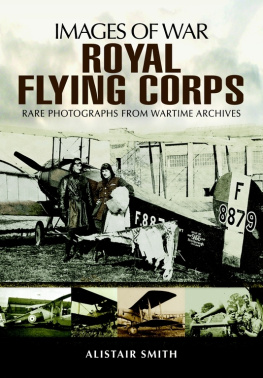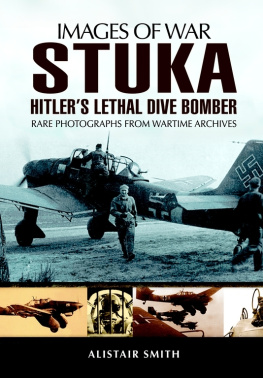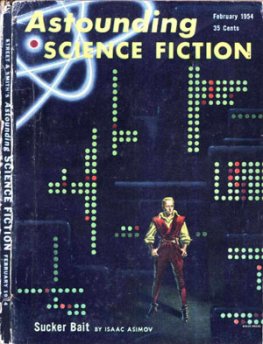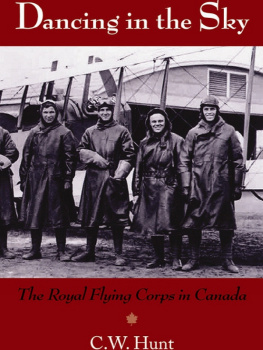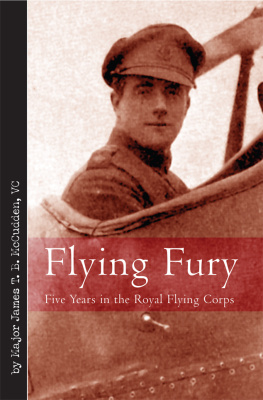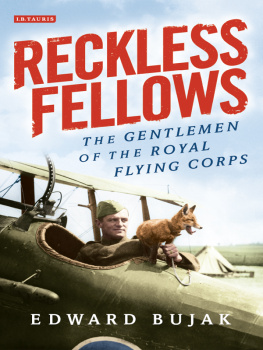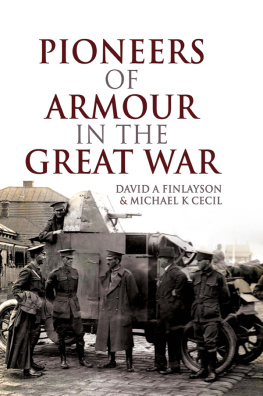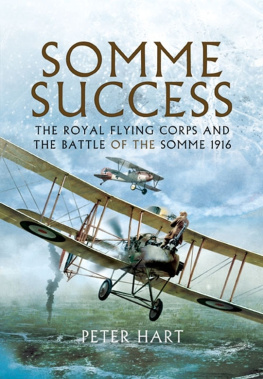Alistair Smith - Royal Flying Corps
Here you can read online Alistair Smith - Royal Flying Corps full text of the book (entire story) in english for free. Download pdf and epub, get meaning, cover and reviews about this ebook. year: 2013, publisher: Pen & Sword Books, genre: Religion. Description of the work, (preface) as well as reviews are available. Best literature library LitArk.com created for fans of good reading and offers a wide selection of genres:
Romance novel
Science fiction
Adventure
Detective
Science
History
Home and family
Prose
Art
Politics
Computer
Non-fiction
Religion
Business
Children
Humor
Choose a favorite category and find really read worthwhile books. Enjoy immersion in the world of imagination, feel the emotions of the characters or learn something new for yourself, make an fascinating discovery.
- Book:Royal Flying Corps
- Author:
- Publisher:Pen & Sword Books
- Genre:
- Year:2013
- Rating:3 / 5
- Favourites:Add to favourites
- Your mark:
- 60
- 1
- 2
- 3
- 4
- 5
Royal Flying Corps: summary, description and annotation
We offer to read an annotation, description, summary or preface (depends on what the author of the book "Royal Flying Corps" wrote himself). If you haven't found the necessary information about the book — write in the comments, we will try to find it.
Royal Flying Corps — read online for free the complete book (whole text) full work
Below is the text of the book, divided by pages. System saving the place of the last page read, allows you to conveniently read the book "Royal Flying Corps" online for free, without having to search again every time where you left off. Put a bookmark, and you can go to the page where you finished reading at any time.
Font size:
Interval:
Bookmark:

When the First World War broke out in August 1914, only Squadron Nos 2, 3, 4 and 5 had aircraft. Squadron No 1 at this stage had balloons, but this equipment was turned over to the Royal Navy and, in time, they were equipped with their own aircraft.
The first sixty Royal Flying Corps aircraft left Dover on August 13 1914. They made for Boulogne and then towards Amiens, and ultimately to Maubeuge. Even before the Royal Flying Corps was engaged in aerial missions they had lost two of their men. A pilot, Robert R Skene, and his air mechanic were both killed when they crashed at Netheravon the day before the squadrons left Dover.
Squadron No 1, now equipped with aircraft, followed the other squadrons over to France a few days later. Officially the Royal Flying Corps undertook its first mission on August 19 1914. It was undertaken in poor weather. Two pilots, without their observers, were sent off to carry out a reconnaissance; one got lost and had to return home but the other successfully carried out his mission. Just three days later the Royal Flying Corps lost their first aircraft in combat. A newly arrived Avro 504 of Squadron No 5 was shot down by rifle fire over Belgium, killing the pilot and his observer.
On the very same day the first crucial contribution made by the Royal Flying Corps took place. A Royal Flying Corps aircraft saw the 1st German Army trying to work its way around the flank of the British Expeditionary Force. Had they not spotted this the likelihood is that the British Army would have been cut off and surrounded. In the event, the British Expeditionary Force commander, Field Marshal Sir John French, made necessary moves to block the Germans, which led to the battle of Mons.
The Royal Flying Corps was engaged directly in the battle of Mons, which began on August 23 1914. Just two days later the Royal Flying Corps claimed its first kill when an Avro 504 forced down a German Etrich Taube aircraft. Mons was a defeat for the British and the expeditionary force began falling back towards Marne. Once again it was the Royal Flying Corps that spotted the Germans trying to get around the flank of the French forces. Their observation allowed the French to counterattack just in time.
Throughout the course of the First World War the responsibilities of the Royal Flying Corps were many and varied. One of the new roles was to carry out photo reconnaissance and to use wireless telegraphy. The first really useful aerial camera did not become available until around 1915. These were semi-automatic cameras and they could be fitted to a hole in the bottom of the fuselage or strapped to the side of the fuselage. If the aircraft was flying at around 16,000ft it could take a very good shot of the landscape below, covering at least a 2sqm area.
Wireless telegraphy proved to be invaluable in assisting the fall of artillery shells. This was a second, important role carried out by Royal Flying Corps aircraft. The aircraft would be sent up and could report on where the first ranging shots or the barrage itself was landing in relation to the intended target. Using wireless telegraphy the aircraft could communicate directly with the artillery unit and help them adjust their aim. The major problem with the early telegraphy units was that they were large and heavy. The other issue was that they could only send and not receive. The consequence of this was that the pilot would have to fly, navigate, observe and send messages, converting them into Morse code, all at the same time. The artillery unit receiving the message from the aircraft was not even able to request a repeat of the message if the pilot had made an error.
Over the course of time there were improvements made and one such was the so-called Zone Call. Maps of the area were gridded and the pilot could send by Morse the precise square in which the target was located. This still needed an enormous amount of skill.
As the war progressed, by the spring of 1915, limited bombing raids were carried out by the Royal Flying Corps. The first one was against a railway station. It was not until the autumn of 1917 that any form of strategic bombing was really mounted.
One of the other key issues for the Royal Flying Corps was to help British troops on the ground when they were launching an offensive, or facing a determined attack by the Germans. This was achieved by a combination of machine guns and bomb racks. Carrying out attacks against German ground targets at incredibly low altitude required nerves of steel, as it was incredibly dangerous and ground troops quickly learned that Royal Flying Corps aircraft were vulnerable even to rifle fire. It should be noted that armoured aircraft were not available throughout the course of the First World War. Royal Flying Corps squadrons engaged in ground attack missions could expect a high attrition rate.
This album, as with two of the other albums in this book, primarily seems to focus on the training of Royal Flying Corps personnel. Photographs taken by pilots over the trenches in Europe are incredibly rare. The men that were recruited into the Royal Flying Corps came from a variety of different backgrounds. Many of the pilots were actually seconded from infantry units. Their first role was that of an observer. They were not really trained until at least 1917, hence it is significant that many of the photographs in this particular collection date around that time. Prior to formal training an observer would become fully qualified only by carrying out observation missions.
There was a peculiar relationship between the pilot and the observer. Technically the pilot was nothing more than a driver and it was the observer that was in command of the aircraft. Some of the observers could, in an emergency situation, take over control of the aircraft, but the vast majority of the aircraft in any case did not have dual control. This meant that if the pilot was killed or badly injured then the aircraft was almost certain to crash. Ultimately, the command roles were reversed, as it was recognised that it was the pilot that should command the aircraft.
Certainly in the initial stages of the First World War pilot training was fairly rudimentary. Large numbers of the trainee pilots actually died as a result of crashes, even before they had seen action. This meant that an entirely new approach had to be developed. It was decided to set up proper training centres and develop a comprehensive training programme.
By the late spring of 1916 a number of flying schools had been set up across Britain and indeed there were advanced training schools, which were run by fully qualified pilots. These men would try to replicate the kind of combat conditions that the newly trained pilots would have to face.
It should also be noted that the Royal Flying Corps was not an all-British affair. There were large numbers of Australians, New Zealanders, Canadians and South Africans. Before the United States entered the war in 1917 there were upwards of 200 American pilots serving in the Royal Flying Corps. The biggest contribution in terms of nationality was from the Canadians. A full one third of Royal Flying Corps aircrew were Canadian.
This photographic album consists predominantly of photographs of aircraft and we know that the owner of this album was certainly at Tangmere from at least 1917. Tangmere became an airfield as a result of an accident. On November 19 1916 a trainee pilot, Lieutenant Geoffrey Dorman, was in the process of completing his twenty hour solo flying in order to gain his wings. He was making a cross-country flight between Shoreham and Gosport in his FE2B, serial number 4875. He began to encounter engine problems and, in fact, his engine failed. Unfortunately there was a heavy mist and he took the decision to try to land on open ground in the country, rather than risk limping on towards Portsmouth. Luckily for Dorman the mist cleared and he managed to nurse his aircraft down into a field. When he got back to base at Gosport he told his senior officers that it was an ideal location for an airfield. Whether it was as a consequence of this recommendation or not, the government bought 200 acres in the following year, which would become Tangmere. It was in use from September 1917, primarily for flight training.
Font size:
Interval:
Bookmark:
Similar books «Royal Flying Corps»
Look at similar books to Royal Flying Corps. We have selected literature similar in name and meaning in the hope of providing readers with more options to find new, interesting, not yet read works.
Discussion, reviews of the book Royal Flying Corps and just readers' own opinions. Leave your comments, write what you think about the work, its meaning or the main characters. Specify what exactly you liked and what you didn't like, and why you think so.

